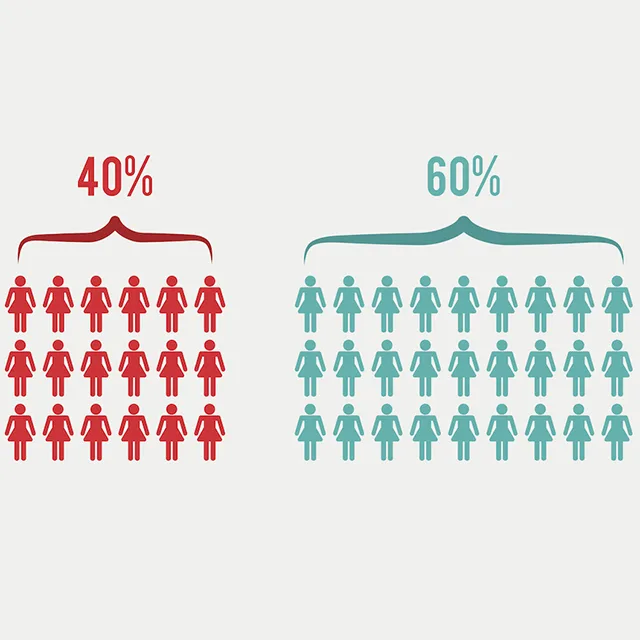When it comes to personalized video, the importance of video marketing analytics cannot be overstated. Personalization is about speaking to consumers as individuals. However, marketing analytics – by definition – is about understanding those consumers as an audience. The use of this data to measure your video marketing initiatives will help you assess the success rate of any campaign, while also planning for the future.
There are plenty of marketing analytics solutions and software programs available to brands. Yet there are so many options to choose from, and so many possible data points for tracking, that it can often become difficult to figure out what research is most relevant for a marketer.
One of the biggest challenges for any marketer is not to become too enraptured with view counts as a metric. Everyone loves to boast about a high number of views, but quality – not quantity – is the true litmus test of a video marketing campaign. Taking a more nuanced approach to the statistics is desirable. Focus on aligning your marketing objectives with the metrics you acquire. Do you want to drive more traffic to your brand’s site? Generate leads? Increase conversions? Figure out your video marketing goals in advance; this, in turn, will set a course of action for how best to focus on the analytics.
Essential Video Marketing Analytics
As you navigate the roadmap of your personalized video campaign, here are several key marketing analytics to be thinking about:
Demographics
First and foremost, marketing analytics need to provide you with the statistical breakdown of your audience by age, gender, race, income bracket and marital status, among a host of possible variables. These categories reveal the exact composition of your audience. Depending on how you separate or cross-pollinate the segments, you can gain insight into who received your video content, and how various combinations of demographic profiles responded.
Length of Views and Drop-Off Rates
Audiences have increasingly short attention spans, so the amount of time your audience spends with the video they receive is another metric which deserves your attention. How much of your video content is getting seen? How many viewers reach the end of every video? As an addendum to these measurements, you should track the scroll depth, i.e. how far down the page the viewer chooses to read. If all of these numbers reveal that viewers are clicking away from your videos soon after they begin watching, it may be a sign that they have lost interest in your brand’s messaging, which will have a trickle-down effect on site traffic and conversions.
Conversions
No matter how entertaining a personalized video may be, the content needs to be purposeful. Every video requires a call to action which audiences should fulfill upon viewing your content. To track the effectiveness of that call to action, the number of conversions is the defining metric.
ROI
Marketers will obviously want to know the return on investment (ROI) of a video to justify the expense. The aforementioned video marketing metrics will help in tracking your ROI, but a few other data points are beneficial toward this end. First, there is the play rate, which measures whether the video was viewed once it loaded. For instance, if the play rate is 60%, it means the video was watched 6 out of 10 times it loaded. Then, you should look at the average engagement – the average of how much of your video got watched in total. The higher the engagement, the longer your audience is watching and responding. Finally, the click-through rate will tell you how many viewers of your video clicked on the Call-To-Action. The higher this percentage, the more your viewers are taking the desired action when viewers reach the conclusion of the video.
Audience Geography
Where in the world is your audience actually viewing their video? A report on audience geography will let you know whether your video content is relevant with your brand’s intended demographic. This not only helps to manage costs, but also confirms whether or not you are on message with your brand’s marketing ethos.
Devices / Browsers Used
How is your audience consuming video? Are they watching on mobile devices or desktop computers? Are the videos playing in-app or on your branded web page? What web browsers are being used – Safari, Chrome, or Firefox? Are the videos distributed through social media networks like Facebook or on video-sharing sites like YouTube? The marketing analytics reveal all the digital platforms which deploy your videos. This information can help you understand the behavior of audiences as they access and respond to your video content across different channels.
Interaction & Engagement
It can be tempting to look at the number of shares of your video to measure interaction and engagement, but as Tony Haile once wrote, there is no statistical correlation between shared content and capturing audience attention. In other words, just because you share doesn’t mean anyone else cares. While the number of shares is another metric you should consider, it should be done so in accordance with both the number of comments on the video and the content of those comments. Gathering and reading this feedback is a qualitative step, but as with all of the other video marketing analytics discussed in this article, it should be viewed as part of a collective analytical breakdown, not treated as an isolated measurement.




